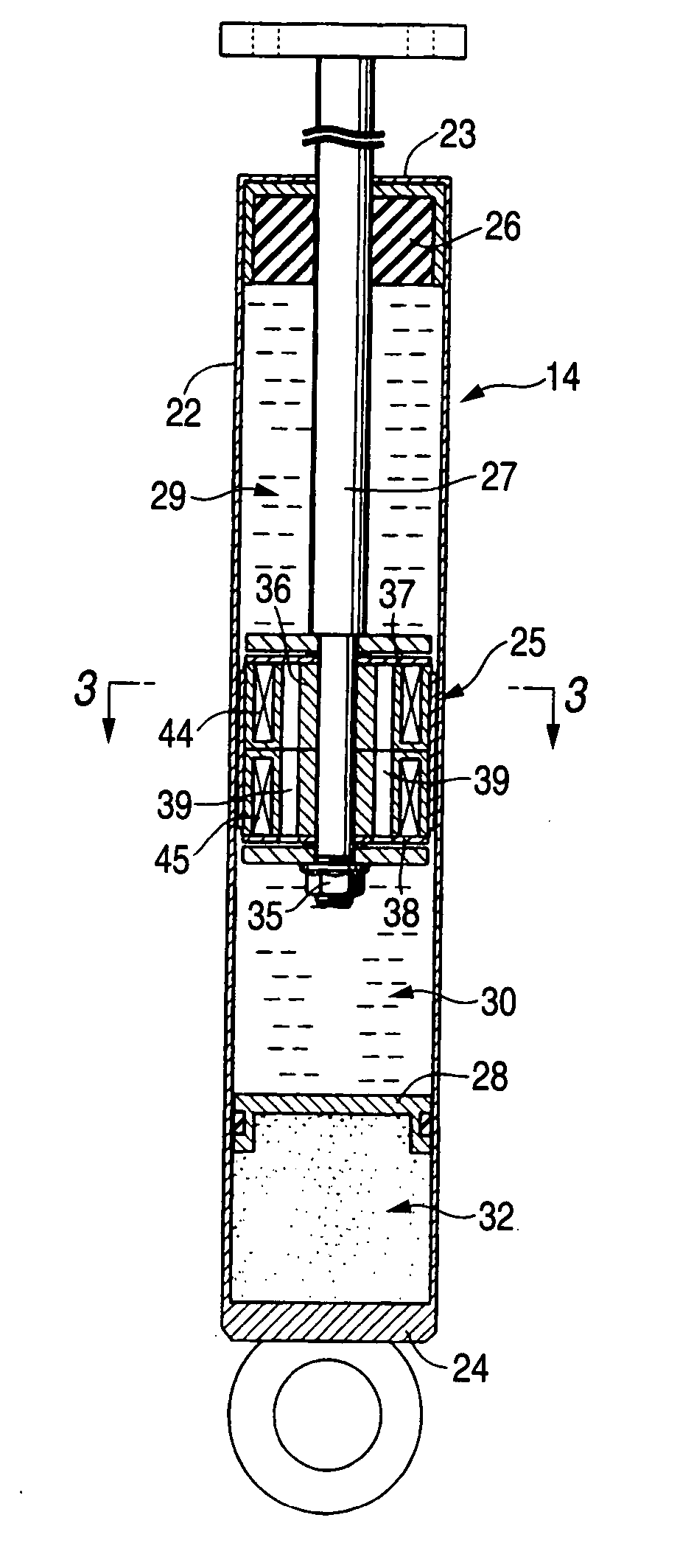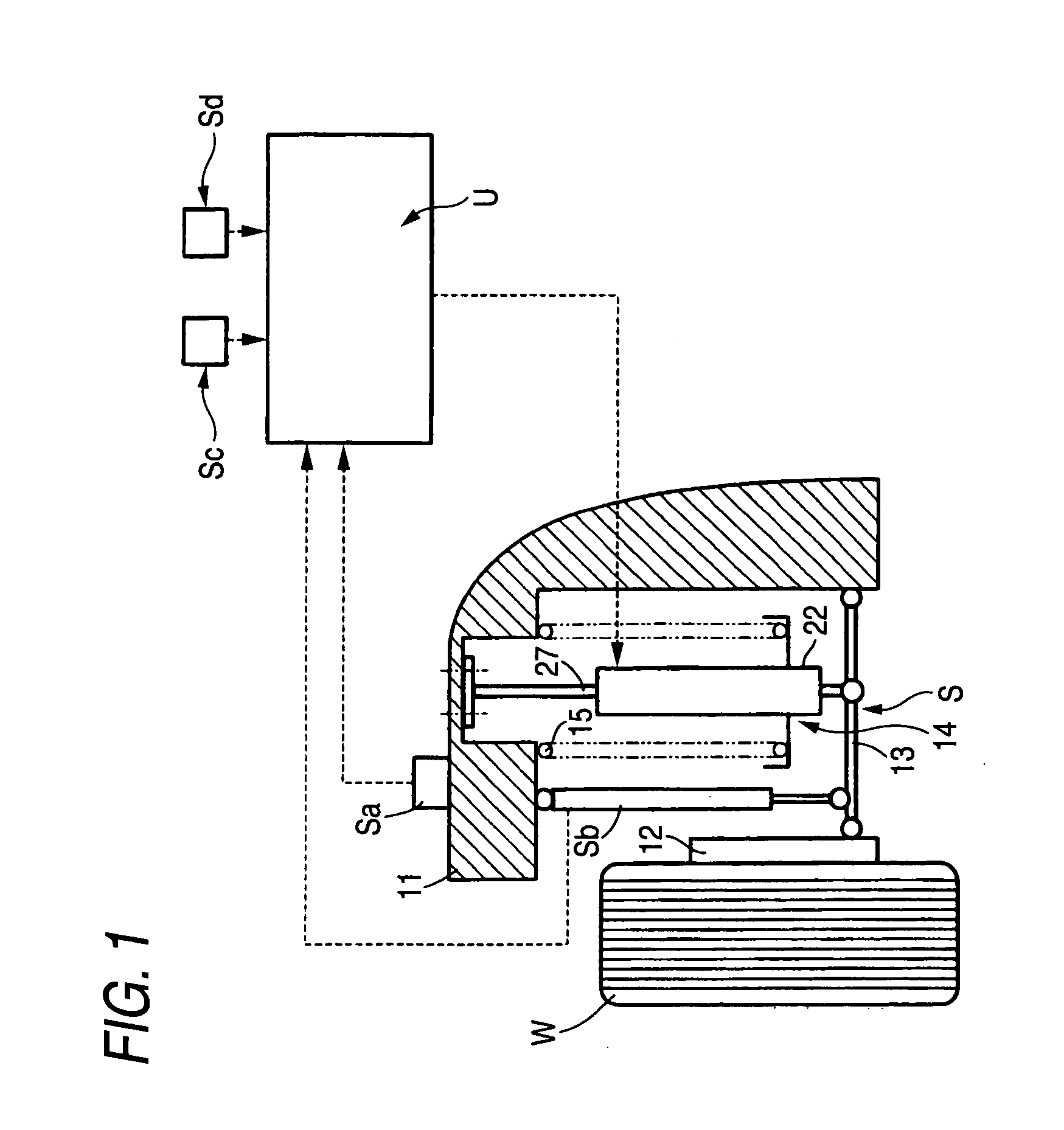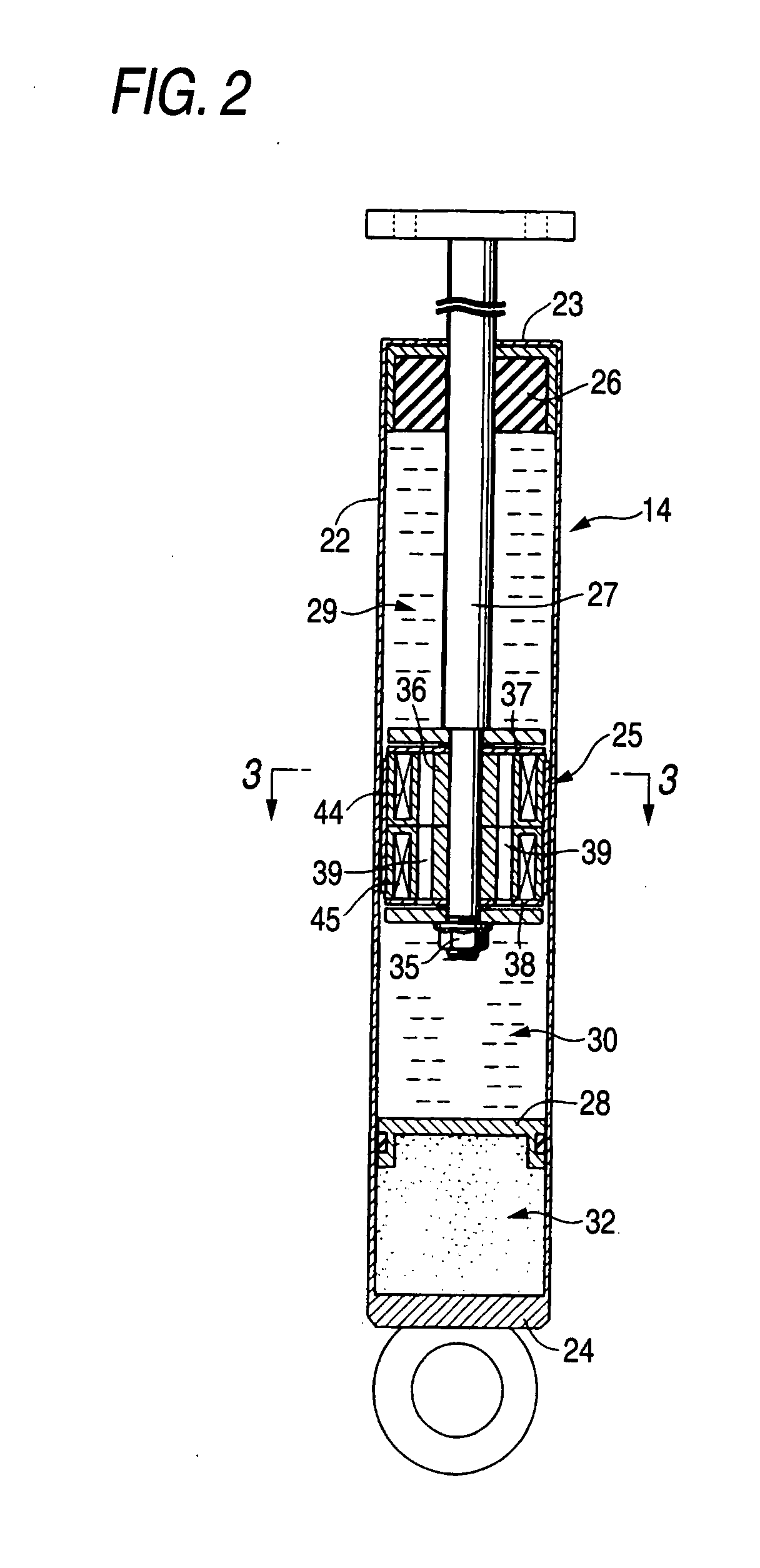Variable attenuation power damper
a damper and variable technology, applied in the direction of shock absorbers, springs/dampers, vibration suppression adjustments, etc., can solve the problems of low response, increase in parts, complex structure, etc., and achieve the effect of reducing the number of parts and assembly steps, enhancing the response in high-frequency input time to the damper, and expanding the adjustable width of the attenuation power
- Summary
- Abstract
- Description
- Claims
- Application Information
AI Technical Summary
Benefits of technology
Problems solved by technology
Method used
Image
Examples
first embodiment
[0055] An embodiment of the invention will be described below with reference to attached drawings.
[0056] FIGS. 1 to 9 show a first embodiment of the invention, in which FIG. 1 is a front view of a suspension system in a vehicle, FIG. 2 is an enlarged sectional view of a variable attenuation power damper, FIG. 3 is an enlarged sectional view taken along a line 3-3 in FIG. 2, FIG. 4 is a sectional view taken along a line 4-4 in FIG. 3 (in non-excitation and low-speed time), FIG. 5 is a sectional view taken along a line 5-5 in FIG. 3 (in non-excitation and low-speed time), FIG. 6 is an action explanatory view corresponding to FIG. 4 (in excitation and high-speed time), FIG. 7 is an action explanatory view corresponding to FIG. 5 (in excitation and high-speed time), FIG. 8 is a graph showing a relation between piston speed and attenuation power, and FIG. 9 is a graph for explaining effects of magnetic viscous fluid.
[0057] As shown in FIG. 1, a suspension system S which suspends wheels...
second embodiment
[0081] Next, referring to FIG. 10, a second embodiment of the invention will be described.
[0082] In the first embodiment, the two piston bodies 36, 36 are overlaid in the axial direction and fastened integrally by the piston rod 27 and the nut 35. In the second embodiment, the two-divided piston bodies 36, 36 are formed integrally. In result, it is not necessary for a piston rod 27 to penetrate the piston body 36 in the axial direction, and the piston rod 27 is integrally fitted into the piston body 36 from the upper surface of the piston body 36 to the less than half position of the axial length of the piston body 36. Onto the lower surface of the piston body 36, a second valve plate 38, a shim 43 and a stopper plate 34 are fixed by a bolt 51 which is separate from the piston rod 27 and a nut 52. Between the lower end of the piston rod 27 and the upper end of the bolt 51, the piston body 36 becomes solid, and the volume of the piston body 36 increases correspondingly.
[0083] Onto ...
third embodiment
[0088] Next, a third embodiment of the invention will be described with reference to FIG. 11.
[0089] In the third embodiment, a cylindrical reservoir room 53 is formed so as to surround the periphery of a cylinder 22, and the lower end of the cylinder 22 and the lower end of the reservoir room 53 communicate with each other through plural communication holes 54. The inside of the cylinder 22 and the lower half portion of the reservoir room 53 are filled with oil, and the upper half portion of the reservoir room 53 is filled with gas.
[0090] A movable piston 25 which fits slidably into the cylinder 22 has substantially only the constitution of the lower half portion of the piston 25 (refer to FIG. 5) in the first embodiment. Namely, the movable piston 25 includes a piston body 36, a first coil 45, fluid passages 39, fluid passages 40, first orifices 47, a first valve plate 38, a shim 43, a stopper plate 34 and a piston ring 41. In the fluid passages 39, first check valves 55 which pe...
PUM
 Login to View More
Login to View More Abstract
Description
Claims
Application Information
 Login to View More
Login to View More - R&D
- Intellectual Property
- Life Sciences
- Materials
- Tech Scout
- Unparalleled Data Quality
- Higher Quality Content
- 60% Fewer Hallucinations
Browse by: Latest US Patents, China's latest patents, Technical Efficacy Thesaurus, Application Domain, Technology Topic, Popular Technical Reports.
© 2025 PatSnap. All rights reserved.Legal|Privacy policy|Modern Slavery Act Transparency Statement|Sitemap|About US| Contact US: help@patsnap.com



